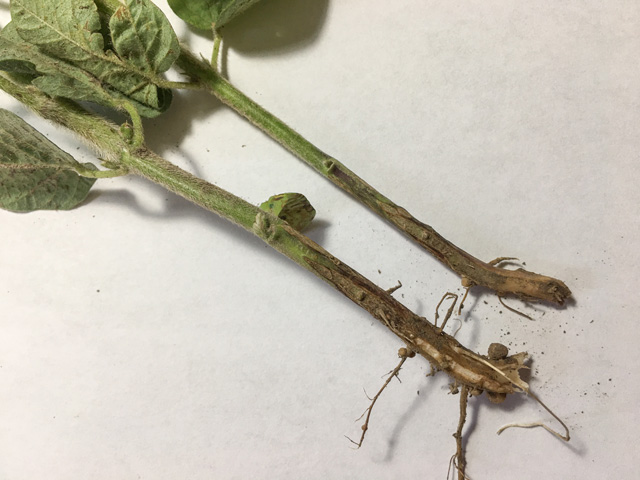Soybean Gall Midge Alert
Soybean Gall Midge Emergence Detected in Nebraska
DECATUR, Ill. (DTN) -- Soybean gall midge adults are spreading their wings. Several sites in east-central and northeast Nebraska recorded emergence of the pest on June 8 and June 9, 2021.
Soybean growers with a history of issues with soybean gall midge are being encouraged to begin scouting now. Field edge applications of a pyrethroid may be helpful in soybean fields where emergence has been detected and the plant is at the V2 growth stage or greater, according to the June 10 alert issued by The Soybean Gall Midge Alert Network (https://soybeangallmidge.org/…).
So far in 2021, no gall midge emergence has been reported in Iowa, Minnesota and South Dakota. A diagnostic network of traps is being monitored in these states, where the pest has been identified in previous years. As of September 2020, soybean gall midge had been detected in 114 counties in the four states. It spread to 14 new counties last year.
University of Nebraska entomologist Justin McMechan told DTN that the secrets regarding the behaviors of this relatively new pest are still being discovered. "But some strategies have been developed to help partially reduce pest pressure and losses," he said.
Soybean gall midge adults look like small, long-legged flies. They deposit eggs in the small cracks at the base of the soybean plant above the soil surface. The larvae that hatch feed inside the stem and eventually cut off nutrient flow, causing the soybean plant to starve and die.
McMechan said these small cracks are common in soybean plants. "They appear to be consistent across its genetics," he noted, based on observation from a germplasm study. The cracks or fissures at the base of the stem are thought to be related to stem expansion as the plant grows, he added.
P[L1] D[0x0] M[300x250] OOP[F] ADUNIT[] T[]
Based on two years of data, soybean plants prior to V2 don't have the cracks in the stem and are not considered to be susceptible to soybean gall midge infestations. If your field is at VC or V1, it is recommended to wait until V2 to make an insecticide application and then only if you are in a high-risk area and have adult gall midge activity occurring.
Insecticide results have been variable over the past two years, so efficacy of treatment is not guaranteed. In 2019, pyrethroid insecticides applied at different timings relative to adult emergence showed a significant yield response in Nebraska when applied up to 10 days after the first emergence was detected. However, in 2020, most foliar insecticides failed to mitigate yield losses.
Soybean gall midge is a field-edge-infesting pest, so treatments may only be needed within the first 60 to 120 feet of a field edge. The pest also tends to be a problem in fields directly adjacent to a field that was injured the previous year.
Here's a checklist of questions to ask before considering treating:
-- Have soybean gall midge adults emerged in your area?
-- Is your soybean field at the V2 growth stage or greater?
-- Did you observe soybean gall midge injury in the adjacent field last year?
University of Minnesota entomologist Bruce Potter also issued a caution for his state on June 10, noting that, historically, few fields have had significant damage or yield loss in Minnesota. In a written alert, Potter urged growers to be careful about making "insurance insecticide treatments."
Removal of predators, temperatures in the upper 80s and 90s Fahrenheit and moisture-stressed crops can create spider mite outbreaks, Potter wrote. "Also, soybean aphids, some pyrethroid resistant, are moving into soybean fields now (if the dry heat doesn't mummify them on the way there)," he added.
A map showing adult detection and spread of soybean gall midge and many tips for scouting can be found at https://soybeangallmidge.org/…. You can also sign up for texts and alerts to learn when adults have emerged.
Pamela Smith can be reach pamela.smith@dtn.com
Follow her on Twitter @PamSmithDTN
(c) Copyright 2021 DTN, LLC. All rights reserved.






